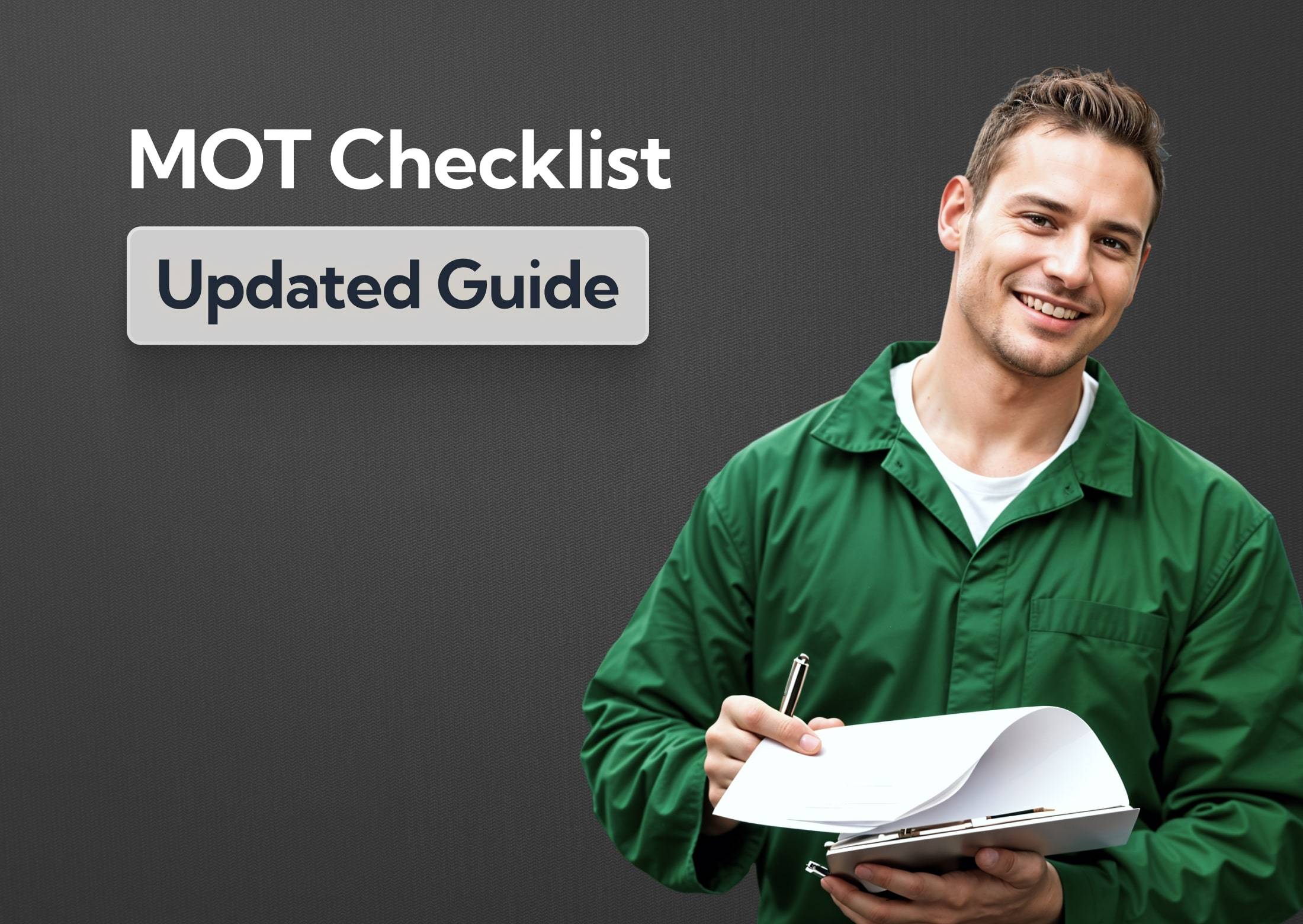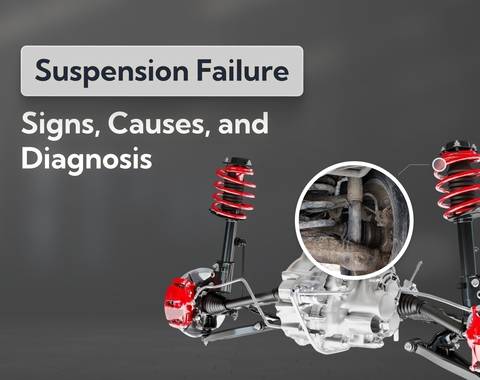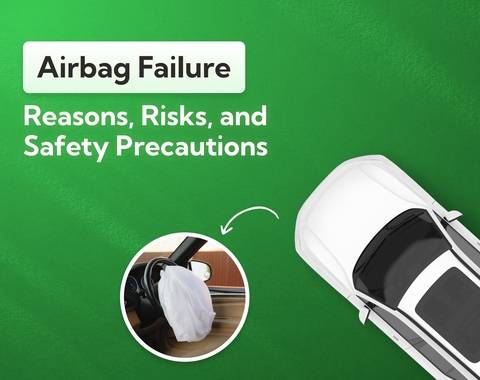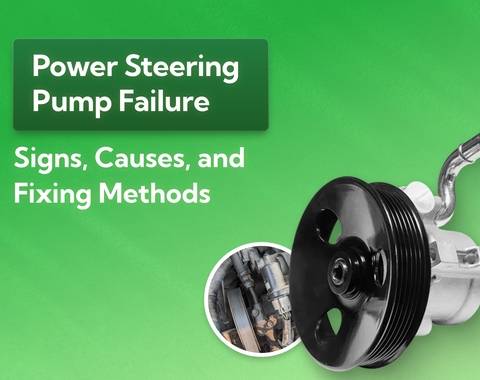MOT Checklist and Guide
Before your MOT, it pays to know what’s actually inspected. Headlights that don’t align, a cracked windscreen or a dashboard warning light can all lead to a fail. This guide gives you a clear checklist of what testers look for and how to prepare your car to avoid surprises.
Last updated: 10th October, 2025

Anthony Sharkey is COO at New Reg Limited (Car.co.uk, Trader.co.uk, Garage.co.uk), driving innovation in vehicle recycling, logistics, and customer experience.

Listen to this story
For most of us, an MOT can be unknown territory – and it’s sometimes a worrying time that can end with an unexpected outlay to keep your car on the road.
Apart from being a legal requirement for cars of a certain age, MOTs usually inspire a few questions, including:
- How do I check MOT history?
- When is an MOT due for a new car?
- How long does an MOT take?
- What documents do I need for an MOT?
The good news is, MOTs don’t have to be a mystery. We’ve put together a guide that will walk you through everything you need to know about the whole process; including detailed explanations about what happens before, during, and after the test. We’ve even got you covered if you get the dreaded phone call from a test centre to tell you your vehicle has failed.
What's in this article
- 1. Need to check MOT status of a vehicle?
- 2. Part 1: What is an MOT, and which vehicles are subject to testing?
- 3. Part 2: Before your car’s MOT test
- 3.1 Will my car need an MOT?
- 3.2 When is my car’s MOT due?
- 3.3 Who is responsible for a vehicle’s MOT?
- 3.4 So, what happens if you’re driving a lease or company vehicle?
- 3.5 Can I drive if my MOT’s run out?
- 3.6 Is there any grace period for an MOT?
- 3.7 Do you need to take old MOT certificate to the car’s next test?
- 3.8 Do vehicle recalls cause MOT problems?
- 3.9 Should I prepare for the MOT?
- 3.10 What is a pre-MOT check?
- 4. The Car.co.uk pre-MOT checklist
- 5. Part 3: The MOT test
- 6. Part 4: MOT failure – what happens next?
- 6.1 What are the most common reasons for MOT failure?
- 6.2 Will I get an MOT failure list?
- 6.3 Having repairs carried out after your MOT failure
- 6.4 Can I drive my car if it fails the MOT?
- 6.5 So, if I take the MOT test early and it fails, can I still drive until the old MOT expires?
- 6.6 Appealing the result of an MOT
- 7. Part 5: MOT advisory codes
- 8. Part 6: Why do MOTs matter if you’re buying or selling a car?
Need to check MOT status of a vehicle?
If you’d just like to check your car’s MOT status or take a look at how another vehicle has performed what it was last tested – you can do that now with our handy free MOT check service. You’ll be able to check when the MOT is due – and look back over previous MOTs; including all recorded defects.
Part 1: What is an MOT, and which vehicles are subject to testing?
An MOT is a once-yearly test that must be carried out on vehicles over 3 years old (or 4 years old in Northern Ireland) to prove they are fit to be used on the road.
Unlike a service (which checks and maintains the condition of the vehicle), an MOT is focused on ensuring that the car is safe. Generally, all insurance policies that cover you for driving on the road insist that a vehicle has an MOT – so driving without an MOT is likely to mean your insurance is invalidated too.
What does MOT stand for?
MOT actually stands for ‘Ministry of Transport’ – and therefore, an ‘MOT test’ is a Ministry of Transport test.
Never heard of the Ministry of Transport? You’re not alone. In actual fact, the government department that deals with transport hasn’t been referred to by this name since 1970. Today, the Department for Transport (DfT) oversees all vehicle-related government agencies – but the MOT name lives on.
What is an MOT? A little more detail
When it was introduced in 1960, the MOT test – now commonly referred to as simply an ‘MOT’ – was a fairly basic test that covered just a handful of checks. Back then, an MOT was carried out every 10 years – and it covered little more than the brakes, lights, and steering system.
Over the years, the MOT check list has become much more regular and comprehensive. In the late ‘60s, tyre checks were introduced – and in the late ‘70s, the test was expanded to include windscreen wipers, indicators, brake lights, the exhaust system, and the overall condition of the car’s chassis.
More recently, a vehicle’s emissions and electronic systems have come under greater scrutiny, and the full test now covers 20 different parts or systems on or in the car – each with numerous sub-points that are separately assessed.
Who can carry out an MOT?
Many people assume that any garage can carry out an MOT – but it’s not quite that simple. To become an authorised MOT test station, a garage will need suitable premises and approved equipment – and their company (or an individual working for the company) must meet the requirements needed to become an authorised examiner (AE).
If your vehicle fails its test, the centre that has carried out the MOT must ensure you are under no obligation to have the necessary work carried out there. This is a way of making sure there is no commercial incentive for a garage fail cars simply to carry out paid work.
It’s useful to know that MOT centres cannot refuse to test your vehicle – even if it’s not a particular type, make or model they specialise in. MOT testing centres are expected to be familiar enough with all vehicles to allow them to conduct tests accordingly – even electric vehicles and hybrids.
As well as authorised garages, most local councils run MOT centres too. Generally, these are to keep their own vehicles safe – but they’re usually open to the public too. Council MOT centres don’t normally have the means to fix your car, but they’re often a cost-effective way of getting your vehicle tested. Since councils run these provisions individually, there’s no overall government list available – so we’ve put together a comprehensive list of local authority testing stations to make it easy to track down your local centre.
How much does an MOT cost?
There’s no set cost for an MOT – but the good news is, there is a maximum price that a test centre can charge.
Currently, the Driver and Vehicle Standard Agency (DVSA) set that maximum fee. For most cars, taxis, and vans, the cost is capped at £54.85 – but there’s a list of all vehicle costs available to view on the Gov.uk website.
Of course, there’s nothing to say garages can’t charge less than this – so if you shop around, you can sometimes find centres offering to test your car for less than £30.
Do electric, hybrid, and other alternative fuel cars need an MOT?
Although there’s a focus on emissions as part of the MOT test, cars that use alternative fuel sources are still subject to testing. The popularity of hybrid, electric, and hydrogen fuel cell vehicles has increased dramatically over the last few years – so you’ll still be required to MOT your car – even if it doesn’t run on a traditional fuel. The only difference is, depending on which category your vehicle is, it may not require an emission test.
Does a passing an MOT mean your car is safe?
It’s a common misconception that having an MOT automatically means your car is safe and in good condition. In fact, a recent poll carried out by a large MOT test centre chain found that 47% of people think that an MOT is the only maintenance a car will need each year.
Vehicle maintenance can seem like a complicated subject – so there’s no shame in not fully understanding what a vehicle needs – but it’s important to understand that an MOT does not necessarily mean your car is safe.
Why?
Well, an MOT is the government’s most practical way of ensuring cars on the road are safe – but since it’s an annual spot-check, it doesn’t guarantee the car is safe when the MOT is complete. For example, tyres that pass an MOT could be illegally low on tread just days or weeks afterwards – likewise with brakes components, fluid levels, or a host of other parts.
An MOT gives you a good indication whether work needs to be carried out on a vehicle – but it’s not a replacement for making sure your car is serviced, well maintained, and regularly checked before journeys.
Do you need an MOT to tax your car?
Since MOT and tax services are both now handled electronically, you cannot tax a vehicle that does not have a current MOT certificate.
In some cases, this transfer to an electronic taxing system has taken away a handy reminder to schedule an MOT – as people often booked their car in for its test at the same time as renewing the tax disc on display in the vehicle.
Since tax discs were abolished, there’s no date displayed as a reminder anymore – but don’t worry; Car.co.uk’s got you covered. When you sign up to our free MOT reminder service, you’ll get text and email reminders before your test is due; leaving you free to drive – while we keep track of the admin!
Part 2: Before your car’s MOT test
Now you’ve got a bit of background information about what an MOT is; we’ll cover a few common questions the cover using, maintaining, and preparing your car before its MOT.
Will my car need an MOT?
Not all vehicles need an MOT. If your car is less than 3 years old (4 years in Northern Ireland), then it is exempt from testing. During this time, your car will still need to be serviced and maintained – but you’re not legally required to have an MOT carried out. Again, it’s worth stressing the fact that electric vehicles (EVs) and other non-traditionally fuelled cars do require an MOT – as the test covers far more than just emissions.
It’s not just new cars that are exempt from testing; many old cars are too. It used to be that vehicles registered before 1960 did not need an MOT – but this has been changed. Now, vehicles that are 40 years old or more are exempt.
It’s worth being careful with this 40-year exemption rule though – as cars that have undergone ‘substantial changes’ within the last 30 years will need an MOT, even if their age would mean they are otherwise exempt. This rule will generally only impact classic car enthusiasts who have made adjustments to their car or people who use a classic car for their business. If you think this might apply to your car, you should carefully check the government guidance. If you have a car that you believe is exempt from testing, you’ll need to complete a V112 form to be issued an MOT exemption certificate.
When is my car’s MOT due?
If you’ve got your car’s paperwork to hand, you can check your previous MOT certificate to see when it expires. If you’d prefer to check online, you can use our quick tool to check using just your registration number.
For new cars, the first MOT is due on the third anniversary of its registration. You can find your registration date on your V5C log book.
Remember though; you shouldn’t leave it until the MOT runs out to arrange to have the test done. It’s a good idea to book your MOT in advance – and you won’t lose out if you do. You can get an MOT up to a month (minus a day) before it runs out to keep the same renewal date.
For example; if your MOT runs out on the 15th of October, you can get an MOT after the 16th of September and keep the 15th of October renewal date for the following year.
Who is responsible for a vehicle’s MOT?
As a car owner or registered keeper, the DVLA will consider it your responsibility to ensure the car is appropriately MOT’d, taxed, and insured. If their records show that it is being used and doesn’t have the appropriate MOT, tax, or insurance in place; then you’re likely to be fined and could face prosecution.
However, it is not only you that could face prosecution if the car is not appropriately MOT’d, taxed, and insured.
If someone else drives your car and it doesn’t have an MOT, tax, or insurance; the police will consider them to have failed to ensure the vehicle is fully road legal. As a result, they will be fined or prosecuted – and it’s possible that as the owner of the vehicle, you will be prosecuted too.
So, what happens if you’re driving a lease or company vehicle?
Again, as a driver; you have the responsibility to ensure the vehicle you’re driving is roadworthy and legal. If you’re in any doubt about who is responsible for making sure the vehicle is MOT’d – you should speak to the lease company or business that owns the vehicle.
Can I drive if my MOT’s run out?
If your vehicle’s MOT has run out, you cannot drive it or keep it on a public road. If you do, you could face prosecution and fines.
The only exceptions to this are if you’re driving your car to or from somewhere that repair work is being carried out – or to a pre-arranged MOT test. Increased numbers of police automatic number-plate recognition (ANPR) cameras mean you’re likely to get stopped if you’re driving without an MOT – so you’ll need to prove you were only using your car for an authorised reason should it happen.
Is there any grace period for an MOT?
We’re often asked if there’s any grace period or breathing space around MOTs – but quite simply; there isn’t.
Even if you’ve forgotten to have your car tested and your MOT lapsed yesterday, you’d still be breaking the law if you’re using your car on the road – and you could face a fine of up to £1,000.
Unlike vehicle tax, you won’t automatically get a reminder about your MOT – but you can sign up to get MOT reminders using our free service. When you do, you’ll get an email or text message one month before your car or van MOT is due.
Do you need to take old MOT certificate to the car’s next test?
We’re often asked about which documents you need for an MOT – and you might be pleased to hear that you don’t really need any of your old MOT paperwork.
It can sometimes speed up the process slightly if you’ve got previous MOTs and your logbook – but since all vehicle and MOT information became digital, your test centre should have no problem tracking down your details without any documentation.
What the experts say

William Fletcher MBE
Do vehicle recalls cause MOT problems?
At any one time, there are over 2 million vehicles being used on UK roads that are subject to outstanding manufacturer recall notices. While it’s vital that you respond to the recall, an outstanding recall will not result in an MOT failure.
Selling a car with an outstanding safety recall notice is illegal however – so it’s a good idea to check the GOV.UK vehicle recall database to make sure your car doesn’t need any work carrying out.
Should I prepare for the MOT?
You’re under no obligation to prepare for an MOT – but it’s a good idea to do so if you want to stand the best chance of the car passing the test first time.
Many vehicles fail their MOT due to simple issues – such as low tyre tread, not enough windscreen washer fluid, or a faulty bulb. The good news is, many of these issues are very simple to fix – and taking a few minutes to put them right before your test can save you the inconvenience of a failed MOT.
To help you prepare your car, we’re put together a quick pre-MOT check that’ll help you put right any easily-fixed issues with your car.
What is a pre-MOT check?
A pre-MOT check is a list of quick and simple jobs on parts that will be checked as part of your MOT. Don’t worry! You don’t have to be a mechanic to carry out most pre-MOT work.
In fact, we’ve put together a pre-MOT check that virtually anyone will be able to work their way through – even if you’ve never lifted the bonnet of a car before.
The Car.co.uk pre-MOT checklist
Checking the following items should take no longer than 30 minutes – and they could save you the cost and inconvenience of failing your MOT.
Interior checks:
Give it a clean
If your car is overly dirty or has so much clutter that it obstructs a tester, they may not be able to perform the MOT. A quick spring clean will help you avoid this.
Seats and seatbelts
The driver’s seat should adjust backwards and forwards – so make sure it does. Also, seatbelts need to be the right length and working as they should – so give them a sharp tug to make sure they lock as they should if you stop suddenly.
Check your windscreen
Remove any obstructions (sat navs, phone holders, etc.) that might impede the driver’s view of the road. Stone chips and cracks can also cause MOT failure – so if you can see any, it’s worth talking to your insurer to see if you have glass cover so you can have repairs carried out before your test.
Beep the horn
Push the horn to make sure it works – without it, your car will fail its MOT.
Test the hand brake
Your handbrake should hold the car stationary – even if it’s on a sharp incline. Find somewhere you can safely test this – as it may need an adjustment by a garage if it’s not performing as it should.
Warning lights
Changes to MOT failure rules now mean certain warning lights can result in an MOT failure. Testers have to make sure lights that indicate there are problems with electronic stability control, safety restraint, anti-lock braking, and tyre pressure monitoring systems are not permanently illuminated. If they are, you should talk to a garage about putting them right before the MOT.
Exterior checks:
Number plates
While you’re cleaning your car, make sure the number plates are clean. They need to be readable for your car to pass the MOT.
Check your tyre treads
Low tread on your tyres can mean an MOT fail. You can quickly check them using a 20p coin. Place the coin sideways into the tread of the tyre – if the band that goes around the coin disappears into the tread, the tyre is over the legal limit, but if you can still see some of the band, you may need to talk to a garage about having illegal tyres replaced.
Check tyre pressures
Tyres that are under- or over-inflated can be very dangerous – and if the tyre pressure warning light is on, you’ll fail the MOT. Check the pressure in each tyre matches the manufacturer’s recommendations – and add/remove pressure as required. Most petrol stations have a tyre pressure machine that you can use to do this.
Check your lights
Test all your lights in turn – including dipped and main beam, fog lights, indicators, and brake lights. You’ll need someone to stand outside as you flash the lights and press the brake. Making sure all your lights work is high on the list of MOT requirements.
Check windscreen wipers
Take a quick look at your wipers and make sure there are no rips or missing chunks from the rubber that wipes your screen. If they don’t work as intended, they can cause your car to fail its test.
Open and close bonnets, doors, and the boot
Bonnets, doors, and the boot need to open and close as intended – so work your way around the car, making sure they do.
Check fluid levels
Make sure the car’s got enough oil, brake fluid, and screen wash. These are easy to top up – but if you’re not sure, motoring stores will help you choose the right fluid and will often top it up for a small fee.
Check your mirrors
Your vehicle’s mirrors should be free from any cracks or damage and should be securely attached to the car. If they’re not, most motoring stores provide replacement glass that can simply be stuck on using adhesive pads.
Check your paperwork
Your V5C log book document shows your Vehicle Identification Number (VIN). This number is also on a plate on your vehicle’s bodywork – so make sure the two match before your MOT, as discrepancies will lead to failure.
Part 3: The MOT test
With some pre-MOT checks and simple jobs out of the way, it’s time to look at what happens when you take your car to your appointment at the testing station.
How long does an MOT take?
Typically, an MOT will take somewhere between 45 and 60 minutes – although some garages will ask you to leave the car with them for a full morning, afternoon, or even a day.
Although the test itself is fairly quick, these 45-60 minutes don’t include any time spent carrying out work that needs to be done to pass the MOT; so you’ll need to factor in additional time if work is going to be carried out on the day.
Most garages won’t mind if you wait while the car is being tested – and you’ll be able to watch as your MOT is carried out from the garage’s viewing area.
What is checked during an MOT?
The full MOT test goes into depth across a number of different parts and systems on the car. We’ve created a comprehensive checklist that explains what gets checked on an MOT:
Battery
The battery must be securely held in place – and it should not show any signs of electrolyte fluid leaking. An unsecured battery could ignite a fire in the event of a crash – and the electrolyte fluid inside the battery is extremely dangerous, so leaks are hazardous.
Brakes
To test your brakes, the vehicle will be placed on rollers that simulate driving on the road. When applied, the brakes must be balanced – i.e. stop the vehicle in a straight line without pulling to either side.
There should be no ABS warning light showing on the dashboard, and the brake pedal rubber should not be excessively worn.
Inspections of numerous braking components will be carried out – including the discs, pads, calipers, brake lines/pipes and cables. The brake servo and master cylinder will also be inspected to ensure they are in good condition and working as intended.
Bodywork and chassis
Generally, MOT testers are not concerned about bumps and scrapes on a vehicles bodywork unless they create sharp edges that you injure pedestrians.
MOT rust rules are a different matter though, especially underneath the car. Excessive corrosion that jeopardises the structural integrity or safety of the vehicle will result in an MOT failure. Also, excessive corrosion on or close to safety-related parts (the steering or brakes for instance) will also cause the car to fail.
Doors and openings
It must be possible to open a vehicle’s doors from both inside and outside – so testers will check this is the case. As well as making sure doors open correctly, they should also shut securely – as should the boot/tailgate and the bonnet.
Electrical wiring
The electric wiring system that runs throughout the car needs to be secure and cannot show signs of damage – especially where it could come loose and short circuit.
Exhaust and emissions
Assuming your car runs on traditional fuel, its exhaust will be subject to a rigorous check – as will the emissions it produces. The amount of harmful exhaust gas the car can produce depends on when it was manufactured – and newer vehicles have stricter standards.
As well as electronically checking emissions levels, the integrity of the exhaust will also be checked – with testers making sure it there are no holes or problems with the connections through the system. The exhaust will have to meet appropriate noise levels too – so loud upgrades can sometimes cause problems.
Horn
For your safety on the road, the horn must function as intended – with a single continuous tone when it’s pressed. It should be loud enough to be heard by other road users – and novelty tones are not allowed.
Lights
All lamps/lights/bulbs on the outside of the car should work as intended – including headlights (dipped and full beam), sidelights, fog lights, indicators, and brake lights.
Your lights should also be correctly aligned – to make sure that they don’t dangerously dazzle oncoming vehicles.
Seats and seatbelts
For all cars built after 1965, seat belts should be fitted and working correctly. The points where the belts are secured to the car should be solid and free from any corrosion. Belts should be in good condition visually – and inertia-reel belts will be tested to ensure they retract properly and lock when required.
Speedometer
A speedometer is required to be fitted in all road-going cars, and part of the MOT check will make sure it is visible and illuminated when the lights are on. Damage to the speedo doesn’t matter – as long as it is accurate and can be read.
Steering
A detailed mechanical inspection will be carried out to make sure that there isn’t excessive ‘play’ (movement) through the steering system. Of course, the steering wheel must be in good condition and properly affixed too.
There are various bearings, bolts, clamps, joints, and gaiters (covers) through the full steering setup too – and these must all be secure and free from damage. The power steering systems must also be working correctly.
Owners of aftermarket wheels and suspension components should be aware that the wheels/tyres cannot foul (touch/rub) the bodywork when the steering is at full lock to the left or right.
Suspension
Suspension components and shock absorbers will be checked to make sure there are no signs of excessive wear, corrosion, distortion, fractures, or poorly fitting components. This includes the linkages and gaiters used to protect moving parts within the system.
Tow bar
If your vehicle has a tow bar, it’s important that it is fit for use; securely attached to the vehicle and not damaged or corroded in any way.
Vehicle Identification Number
As we covered in our pre-MOT checks, a tester will make sure that the Vehicle Identification Number (VIN) that’s found on the car and the DVLA V5C paperwork matches. It must also be clearly displayed on the vehicle - often in the engine bay or under the windscreen.
Wheels and tyres
Most people realise that tyre tread levels are going to be looked at when it’s MOT time – but there’s actually much more scrutiny of the wheels and tyres than you might first imagine.
The condition of the rims will be looked at in detail – with splits, cracks, or distortion almost certainly leading to MOT failure. Wheel bearings must also be in good condition – and the wheel must be securely fastened to the car with the correct number of bolts.
The tyres will be closely inspected too – and if the tread level is found to be too low, i.e. less than the legal “1.6mm throughout a continuous band comprising the central three-quarters of the breadth of tread around the entire outer circumference of the tyre” then this will also lead to MOT failure.
It’s not just tread levels that decide whether a tyre is safe for the road though; damage to the sidewalls of the tyre – along with any cuts or bulges – could also mean failure. The vehicle must have the same size tyres on each axle too – so a vehicle will not pass with odd-tyres or the spare space-saver wheel on.
Windows and mirrors
Unfortunately, windscreens pick up a lot of damage from flying stones and debris – which means they’re a common cause of MOT failure. If there are any chips or cracks, they need to be less than 10mm across (roughly the size of a 5p coin) if they are in an area that’s swept by the windscreen wipers. If the damage is outside this area, the crack or chip can be 40mm across.
Mirrors must be securely attached to the vehicle – so damaged wing-mirrors that are taped on won’t pass – and the glass in all mirrors must allow the driver to see hazards around the car.
Wipers
Wipers must work properly – clearing water from the part of the windscreen their sweep covers. Damaged wipers – or wipers that aren’t installed properly – will leave streaks that can impair a driver’s vision and will therefore result in an MOT fail.
What happens if the vehicle passes?
If you get a phone call from the text centre saying your car’s passed its MOT, then the next step is simple! You’ll need to pick your vehicle up – and when you get your keys back, you’ll also receive a fresh MOT certificate and an MOT report showing what has been tested.
If your car passes, you might find your MOT report shows some ‘advisory’ points. Don’t worry though – ‘advisories’ are just tips on how to make sure your car stays safe between now and the next MOT – and we’ll cover them in more depth in Part 5 of this guide.
Part 4: MOT failure – what happens next?
Each year, millions of people get a phone call to tell them their car has failed its MOT. In fact, since MOT testing became stricter in 2018, the DVSA reported that failure rates went up by nearly 40% - meaning over 10 million cars failed the following year’s test.
Since it’s not uncommon to get a bad news call, this part of our guide will help you take your next steps – making sure you stay safe and on the right side of the law.
What are the most common reasons for MOT failure?
As you can see, the MOT checklist is extensive and leaves virtually no stone unturned – but more often than not, vehicles fail on a handful of similar faults.
According to a major breakdown cover provider, over 85% of MOT defects fall into the same 5 categories:
- Lights and signals – 29.6% of defects
- Suspension – 20.2% of defects
- Brakes – 17.2% of defects
- Tyres – 10.4% of defects
- Drivers view – 8.7% of defects
As a result, you’ll usually be able to get problems like these fixed quickly – and the testing station will often be equipped to routinely tackle these kinds of issues. Alternatively, sometimes, the best thing to do if your vehicle has failed an MOT may be to scrap your vehicle.
Will I get an MOT failure list?
It’s vital that you understand exactly why your car has failed its MOT – so you can arrange to have the defects put right.
Since MOT changes in 2018, defects are categorised in 3 different ways; dangerous, major, or minor. Issues with your car will be documented on an ‘MOT refusal’ form – officially known as a VT30.
Your MOT testing station will recommend that a vehicle with a dangerous fault is not driven under any circumstances – whereas major faults should be fixed as soon as possible – ideally without the car being taken away. Minor faults (also known as ‘advisories’) do not prevent a car from passing it’s MOT.
Having repairs carried out after your MOT failure
Now you’ve got your list of defects, you’ve got some options about your next steps.
If you leave the vehicle at the test centre for its repairs and it’s retested within 10 working days, you will not be charged for a retest, regardless of what is put right.
Of course, you might decide to take your car away and have it fixed elsewhere. According to government guidance, you won’t have to pay for a retest if you return the car to be tested again before the end of the next working day – as long as the faults that have been put right fall into one or more of the following categories:
- Access panels
- Battery
- Bonnet
- Boot lid
- Brake pedal anti-slip
- Doors (including hinges, catches and pillars)
- Dropsides (load access on vans)
- Electrical wiring
- Fuel filler cap
- Headlamp cleaning or levelling devices (that does not need a headlamp aim check)
- Horn
- Lamps (excluding headlamp aim)
- Loading door
- Main beam ‘tell-tale’ indicator on the dash
- Mirrors
- Rear reflectors
- Registration plates
- Seatbelts (but not anchorages), seatbelt load limiter and seatbelt pre-tensioner
- Seats
- Sharp edges or projections
- Steering wheel
- Tailboard
- Tailgate
- Trailer electrical sockets
- Tow bars (excluding body around anchorage points)
- Tyre pressure monitoring system
- Vehicle identification number (VIN)
- Windscreen glass, wipers and washers
- Wheels and tyres (excluding motorcycles and motorcycles with sidecar)
Alternatively, you can take your car away, have the work done – then return it to be retested within 10 working days. If you choose this option, you will be charged for a partial retest. The charge for a partial retest is usually half of the test fee.
If you don’t have the work carried out and 10 working days pass, your car will no longer be eligible for a retest, and you will have to go through the full MOT procedure again.
Can I drive my car if it fails the MOT?
If you decide to take your vehicle away after it’s failed it’s MOT, you need to be very careful – as you could easily find yourself breaking the law.
Strictly speaking, it is possible to drive your car after a failed MOT – but only if the previous MOT certificate is still in date and valid. Of course, you must be absolutely certain that your car still meets the minimum standards of roadworthiness at all times – or you may be liable for prosecution.
So, if I take the MOT test early and it fails, can I still drive until the old MOT expires?
While you are still technically able to drive a car that’s failed an MOT this way, it is not a good idea to do so – and you could be putting yourself or others at risk. We do not recommend you ever drive a vehicle that has failed its MOT.
Appealing the result of an MOT
Although it isn’t something that happens very often, it is possible to disagree with an MOT testing station about a test result.
You can appeal a test result using a VT17 form – and it’s not just reserved for people who think their vehicle should have passed. If your car has passed but you think the testing station has been negligent and shouldn’t have issued an MOT, you can also report the issue.
Part 5: MOT advisory codes
Now we’ve covered what happens if your car fails its MOT, it’s useful to understand ‘minor faults’. Minor faults or ‘advisories’ are less-severe problems with your car that won’t stop it passing the MOT - but will need looking at soon.
Some MOT minor defect examples
In the same way that many MOT failures come down to similar issues – so do many advisories. Typically, an MOT advisories list will include some of the following problems:
Tyres
Perhaps the most common issue that advisories alert drivers to is low tread on their vehicle’s tyres. Although the legal limit is 1.6mm of tread around most of the tyre – it’s better to put new tyres on sooner rather than later.
Wear and tear
Some parts of your car will come to the end of their life through prolonged wear and tear. If a tester spots a part that’s coming close to requiring replacement or repair, they will often note it as an advisory, even if you might get a little more life out of it as-is.
Corrosion
It’s very hard to judge quite how much rust there is on a single component – especially when you’re dealing with parts of the car that are difficult to access. In instances like these, an advisory could note that there is ‘significant corrosion’ to make you aware that it’s something to keep an eye on or have investigated more thoroughly.
Concealed parts
Most modern cars have plenty of plastic trims that even make a dirty engine bay look neat and tidy. The trouble is, these can sometimes make it difficult to inspect certain components – so an advisory could mention parts that the tester was not able to access.
Non-testable issues
MOT testers spend a lot of time around vehicles – so they’ve usually got a good idea of problems that occur outside the MOT testing criteria. If a tester becomes aware of a problem with the car that isn’t part of the MOT, they may use an advisory notice to alert you to it – perhaps suggesting further inspection.
Other points of interest
While non-testable concerns might be used to alert you to mechanical problems that a tester spots, points of interest will generally flag up issues relating to the bodywork or the chassis. Again, these problems wouldn’t fail an MOT but may be something that you should investigate for your own peace of mind.
Part 6: Why do MOTs matter if you’re buying or selling a car?
Now we’ve covered all the different outcomes of an MOT; it’s a good time to talk about why MOTs are important if you’re buying or selling a car.
Does a full MOT add value to a car?
Generally, the more MOT a vehicle has, the better price it will attract – especially compared to a similar car that is sold without any MOT.
If a car has just passed an MOT, it’s peace of mind that it doesn’t have any dangerous or major problems – and the advisories will give you an idea of the work that’ll be needed to keep it on the road beyond its next MOT too. A recent test doesn’t offer quite the same level of confidence as a comprehensive vehicle inspection – but it’s a good second-best.
How can you use MOT checks if you’re buying or selling a vehicle?
In the past, potential buyers would have relied on a car’s paperwork to tell them everything they needed to know about a vehicle they were planning to purchase. The problem was, missing paperwork left nothing but a mystery – and even the best mechanic in the world would struggle to look at a car and say what it had received advisory or failure notices for even just a couple of years beforehand.
Now, this has changed.
Online MOT reports allow potential buyer can get a quick snapshot of how the vehicle’s performed in previous tests. Even without any paperwork, this gives everyone an insight into work that been carried out – or work that’s still required.
For example; if a previous MOT noted that some advisory work was needed – but that work’s never been mentioned on subsequent MOTs; you can be confident that the owner’s had the required work carried out. Along with service history – this would be a good indication that the vehicle’s been well maintained.
On the other hand, work that’s been noted as advisory on an MOT but never carried out could open up some room for negotiation.
About Car.co.uk

Share on
Latest news & blogs










